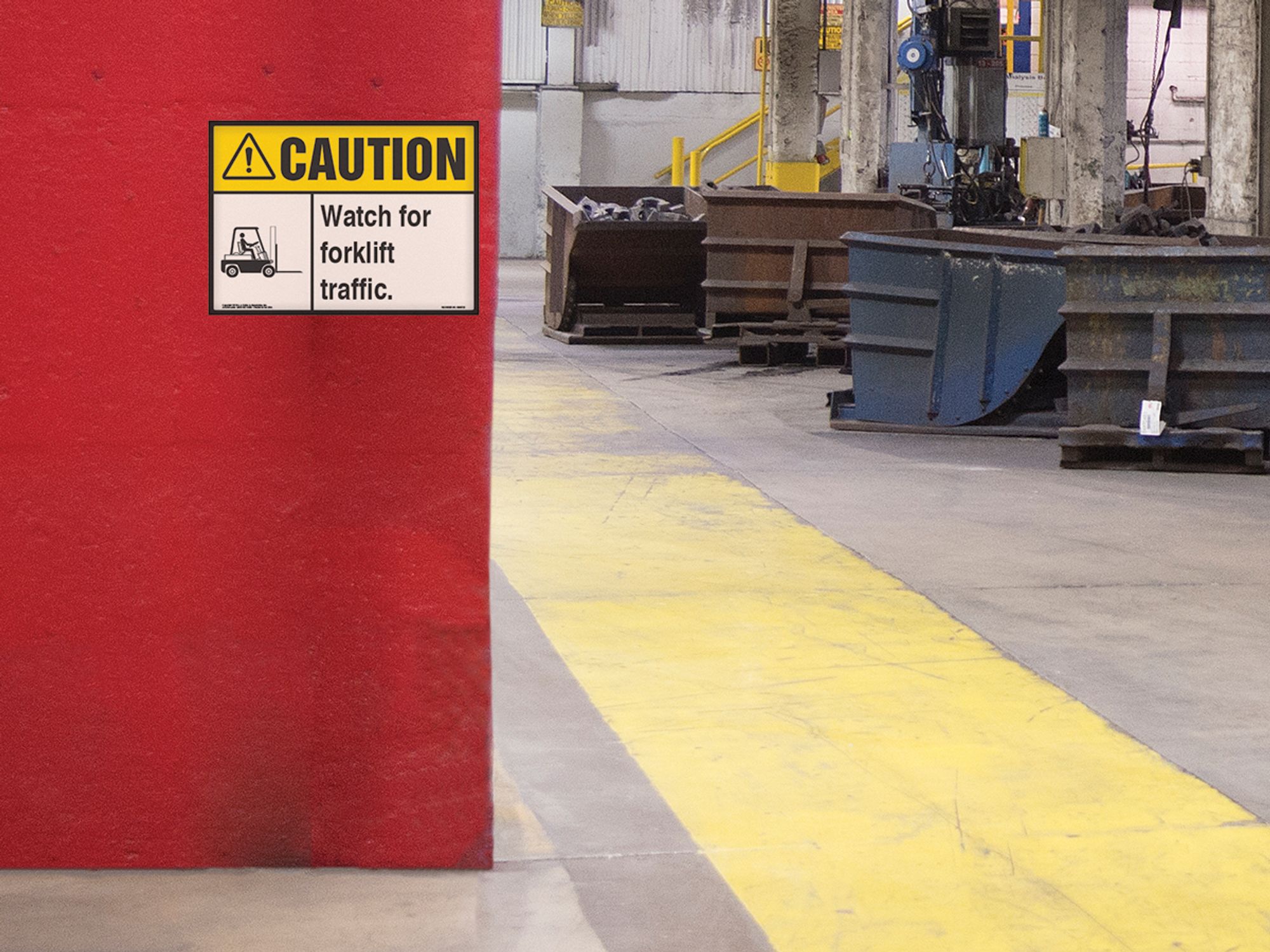Sign location
['Signs and Markings']

- Signs should be placed where they will not be damaged or blocked, and proper illumination should be applied.
When positioning a safety sign, employers should ask themselves if it will be:
|
|
|
Proper illumination of signs should be applied for day-to-day operations. The employer should think about power-outage and emergency situations as well. Will the employer need emergency lighting and/or signs that glow in the dark, reflect light, or have their own power source?
Note that 29 CFR 1910.37 goes over the illumination and minimum luminance value of EXIT signs.
